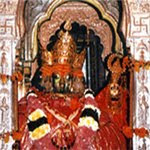Tourism of Rajasthan
Rajasthan has several tourist sights, especially in ancient and medieval architecture. Places of interest are Mount Abu, Ajmer, Alwar(Sariska tiger sanctuary), Bharatpur (Keoladeo bird sanctuary), Bikaner, Jaipur (the Pink City), Jodhpur, Udaipur, Pali, Jaisalmar and Chittorgarh. Tourism was given industry status in 1992.
State Capital Jaipur
Population ('000s in 1991) 44,006
Area ('000 sq. km) 342
Females per 1000 males (1991) 910
Literacy rate (1991) 38.6
Ratio of urban population (1991) 22.9
Net Domestic Product (Rs. million at current prices in 1992-93) 229,360
Per Capita Income (Rs. at current prices in 1992-93) 5,035
Principal Language Hindi and Rajasthani
Rajasthan is located in the northwestern part of the subcontinent. It is bounded on the west and northwest by Pakistan, on the north and northeast by the states of Punjab, Haryana, and Uttar Pradesh, on the east and southeast by the states of Uttar Pradesh and Madhya Pradesh, and on the southwest by the state of Gujarat. The Tropic of Cancer passes through its southern tip in the Banswara district. The state has an area of 132,140 square miles (342,239 square kilometres). The capital city is Jaipur.
In the west, Rajasthan is relatively dry and infertile; this area includes some of the Thar Desert, also known as the Great Indian Desert. In the southwestern part of the state, the land is wetter, hilly, and more fertile. The climate varies throughout Rajasthan. On average winter temperatures range from 8° to 28° C (46° to 82° F) and summer temperatures range from 25° to 46° C (77° to 115° F). Average rainfall also varies; the western deserts accumulate about 100 mm (about 4 in) annually, while the southeastern part of the state receives 650 mm (26 in) annually, most of which falls from July through September during the monsoon season.
Rajasthan has a single-chamber legislative assembly with 200 seats. The state sends 35 members to the Indian national parliament: 10 to the Rajya Sabha (Upper House) and 25 to the Lok Sabha (Lower House). Local government is based on 30 administrative districts.
Rajasthan has several tourist sights, especially in ancient and medieval architecture. Places of interest are Mount Abu, Ajmer, Alwar(Sariska tiger sanctuary), Bharatpur (Keoladeo bird sanctuary), Bikaner, Jaipur (the Pink City), Jodhpur, Udaipur, Pali, Jaisalmar and Chittorgarh. Tourism was given industry status in 1992.
State Capital Jaipur
Population ('000s in 1991) 44,006
Area ('000 sq. km) 342
Females per 1000 males (1991) 910
Literacy rate (1991) 38.6
Ratio of urban population (1991) 22.9
Net Domestic Product (Rs. million at current prices in 1992-93) 229,360
Per Capita Income (Rs. at current prices in 1992-93) 5,035
Principal Language Hindi and Rajasthani
Rajasthan is located in the northwestern part of the subcontinent. It is bounded on the west and northwest by Pakistan, on the north and northeast by the states of Punjab, Haryana, and Uttar Pradesh, on the east and southeast by the states of Uttar Pradesh and Madhya Pradesh, and on the southwest by the state of Gujarat. The Tropic of Cancer passes through its southern tip in the Banswara district. The state has an area of 132,140 square miles (342,239 square kilometres). The capital city is Jaipur.
In the west, Rajasthan is relatively dry and infertile; this area includes some of the Thar Desert, also known as the Great Indian Desert. In the southwestern part of the state, the land is wetter, hilly, and more fertile. The climate varies throughout Rajasthan. On average winter temperatures range from 8° to 28° C (46° to 82° F) and summer temperatures range from 25° to 46° C (77° to 115° F). Average rainfall also varies; the western deserts accumulate about 100 mm (about 4 in) annually, while the southeastern part of the state receives 650 mm (26 in) annually, most of which falls from July through September during the monsoon season.
Rajasthan has a single-chamber legislative assembly with 200 seats. The state sends 35 members to the Indian national parliament: 10 to the Rajya Sabha (Upper House) and 25 to the Lok Sabha (Lower House). Local government is based on 30 administrative districts.



